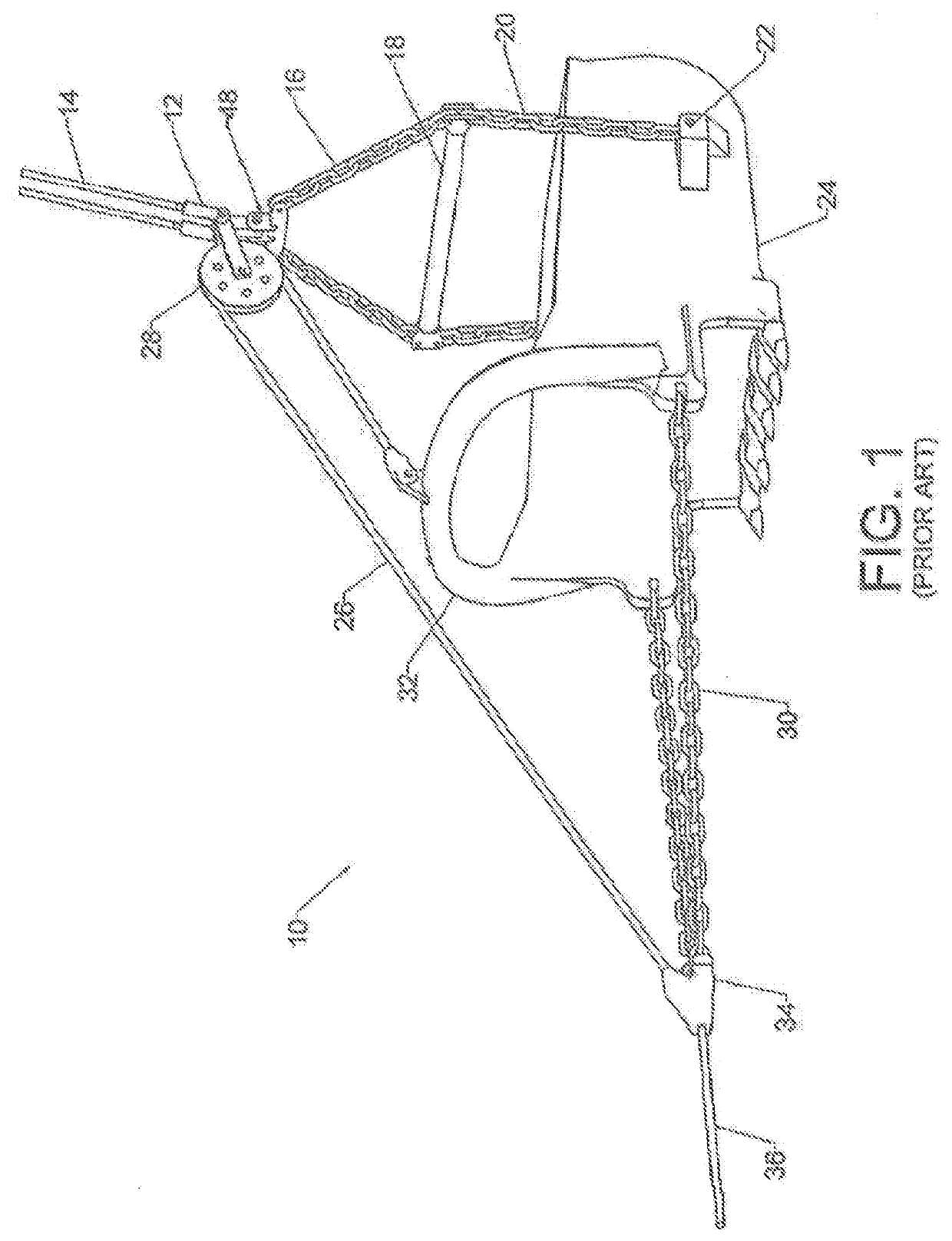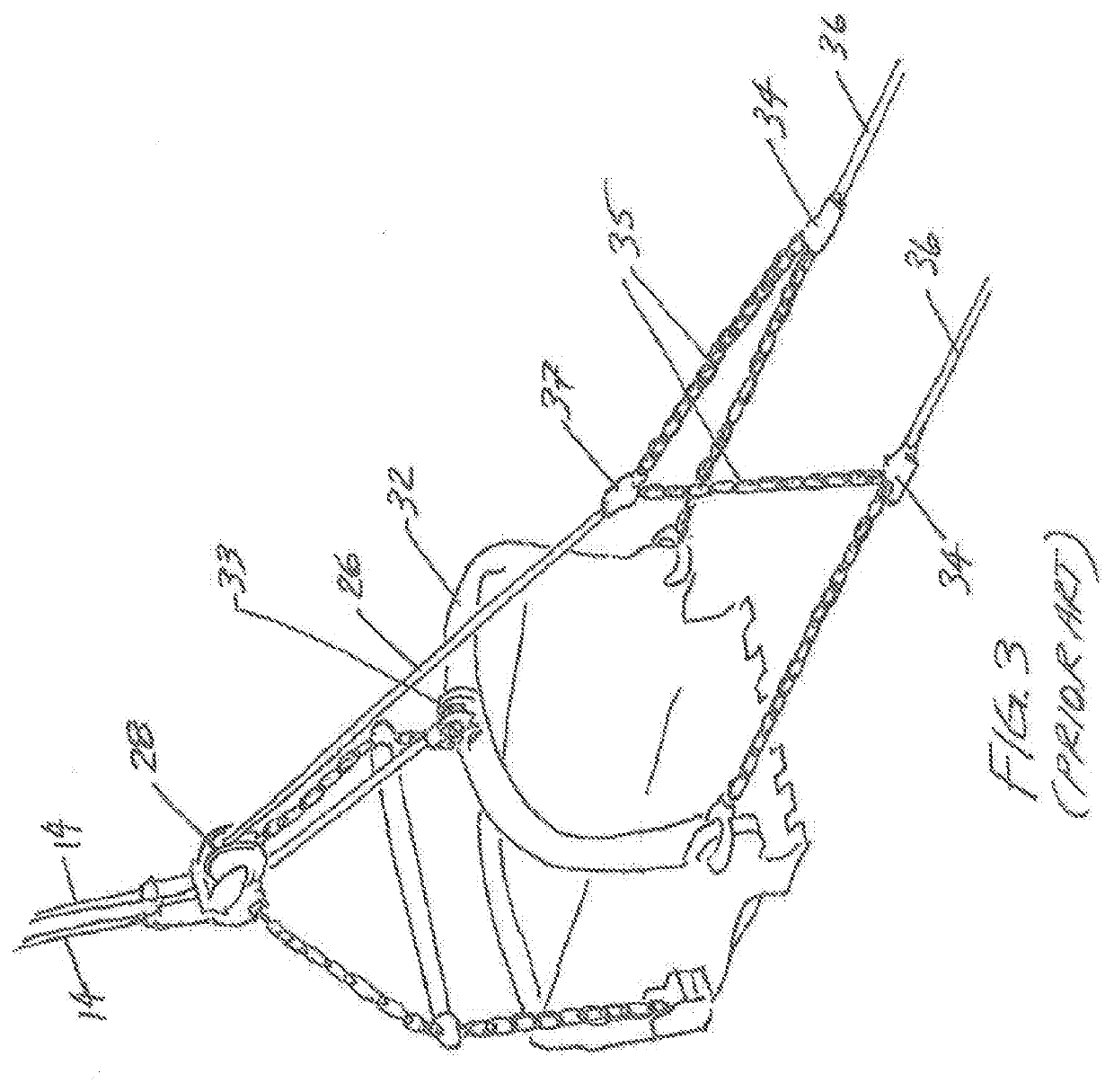Armored Rigging System
- Summary
- Abstract
- Description
- Claims
- Application Information
AI Technical Summary
Benefits of technology
Problems solved by technology
Method used
Image
Examples
Embodiment Construction
[0130]FIG. 6 shows a cross section of an armored tensile member made according to the present invention. Stranded core 54 carries the tensile bad. This stranded core preferably comprises advanced synthetic filaments. Examples of such advanced synthetic filaments include DYNEEMA, SPECTRA, TECHNORA, TWARON, KEVLAR, VECTRAN, PBO, carbon fiber, and glass fiber. In general the individual filaments have a thickness that is less than that of human hair. The filaments are very strong in tension, but they are not resistant to battering and cutting forces. Hence, they have not traditionally been used in hostile environments such as the mining industry.
[0131]The core in the example of FIG. 6 includes seven separate strands (six strands around one center strand). Each of these strands include the aforementioned synthetic filaments. The strands are often braided or twisted into a known pattern. They may also contain more traditional constituents (such as steel wires). A cable or strand including...
PUM
| Property | Measurement | Unit |
|---|---|---|
| Weight | aaaaa | aaaaa |
| Thickness | aaaaa | aaaaa |
| Diameter | aaaaa | aaaaa |
Abstract
Description
Claims
Application Information
 Login to View More
Login to View More - R&D
- Intellectual Property
- Life Sciences
- Materials
- Tech Scout
- Unparalleled Data Quality
- Higher Quality Content
- 60% Fewer Hallucinations
Browse by: Latest US Patents, China's latest patents, Technical Efficacy Thesaurus, Application Domain, Technology Topic, Popular Technical Reports.
© 2025 PatSnap. All rights reserved.Legal|Privacy policy|Modern Slavery Act Transparency Statement|Sitemap|About US| Contact US: help@patsnap.com



